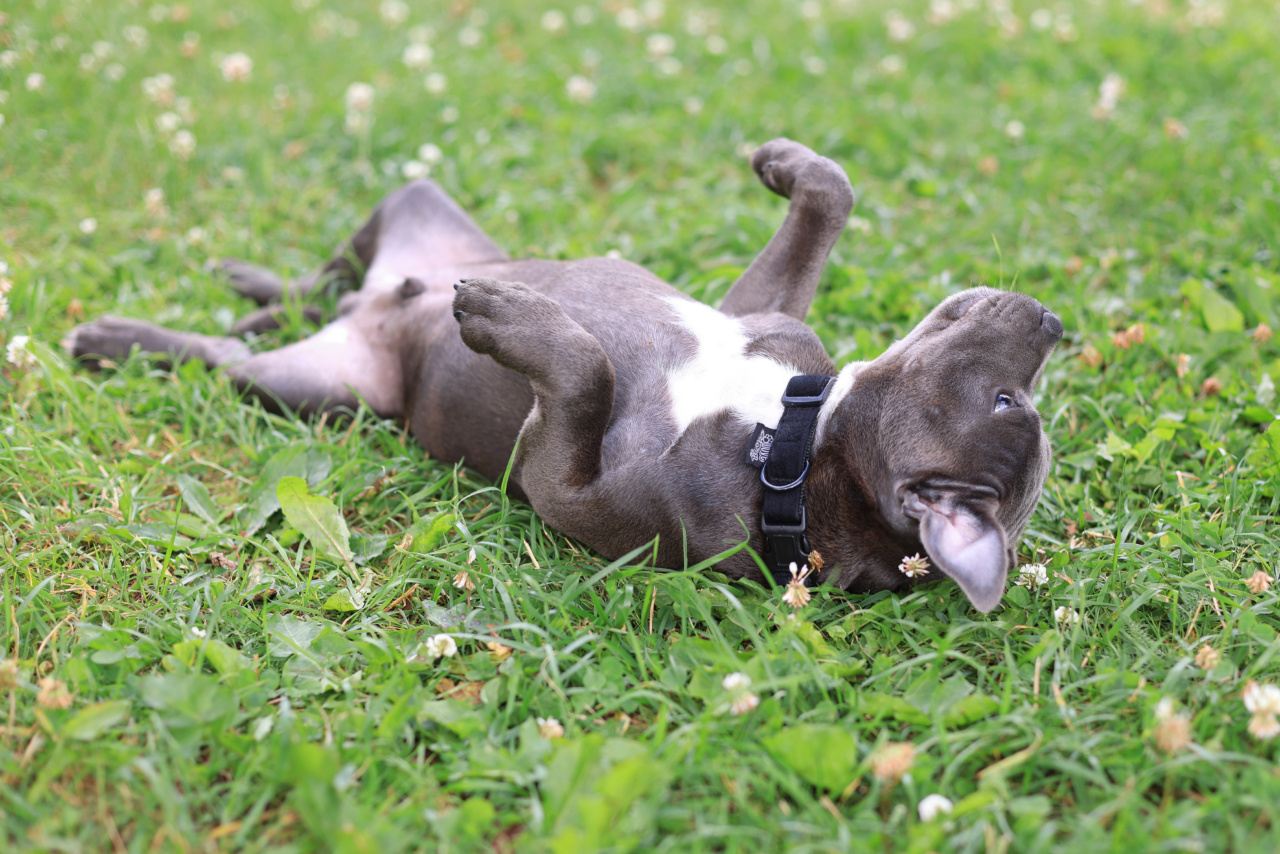Many dog owners have witnessed their furry companions engaging in a peculiar behavior of rolling on their backs. The sight of a dog luxuriously flopping onto their back and exposing their belly can be both adorable and puzzling.
What prompts dogs to do this? Is there any specific reason behind this behavior? In this article, we delve into the psychology of dogs rolling on their backs, exploring the various motives and meanings behind this seemingly simple yet intricate act.
The Role of Submission
Rolling on their back is often perceived as an act of submission in dogs. By exposing their vulnerable belly, dogs indicate their willingness to submit to a more dominant individual.
This gesture is deeply rooted in their instinctual behavior as pack animals. In a hierarchical pack structure, higher-ranking dogs typically have access to valuable resources and privileges. Rolling onto their back is a clear signal that the dog acknowledges the authority and dominance of another individual.
Social Signaling and Trust Building
While submission plays a significant role, dogs also roll on their backs to build trust and strengthen social bonds. By displaying their vulnerable underside, dogs communicate to those around them that they pose no threat.
This behavior not only helps them integrate into social groups but also allows them to forge strong connections with other dogs and humans.
Disarming Potential Aggression
In situations where a dog feels threatened or encounters a potentially aggressive individual, rolling on their back can serve as a form of self-defense. By adopting a submissive posture, dogs aim to defuse any potential conflict.
This behavior often appeases other dogs or humans, signaling that they pose no harm or intention to engage in a confrontation. The act of rolling on their back becomes a proactive measure to avoid aggression.
Seeking Attention and Play
Dogs are social animals that crave attention and play, and rolling on their back can be a way to initiate these interactions. When a dog exposes its belly, it invites others to engage in physical contact, such as petting or playfully wrestling.
This behavior serves as a clear invitation for interactive play, suggesting that the dog is in a playful and sociable mood.
Physical Comfort and Stretching
Aside from social and psychological motivations, dogs may also roll on their backs purely for physical comfort and stretching. This behavior enables them to cool off on warm surfaces or enjoy the sensation of rubbing their back against grass or carpet.
Additionally, dogs may use this posture to stretch their muscles or alleviate an itch on their back. The act of rolling on their back can be a way for dogs to physically satisfy their needs and find temporary relief.
Submission versus Instinctual Behavior
Although submitting is a natural response for many dogs, it is essential to differentiate between voluntary submission and forced submission due to fear or anxiety. Forced submission is not a healthy or desirable behavior.
It is crucial to assess the overall body language and behavior of a dog to understand whether their act of rolling on their back stems from genuine submission or is a result of fear or anxiety.
Environmental Factors
Various environmental factors can influence a dog’s propensity to roll on their back. For example, an environment that is perceived as safe and secure can encourage more instances of rolling on their back as a means of relaxation.
On the other hand, if a dog feels stressed or threatened, they may be less likely to exhibit this behavior. The presence of other dogs, humans, or unfamiliar surroundings can impact a dog’s inclination to roll on their back.
Individual and Breed Differences
While rolling on their backs is a common behavior across various dog breeds, individual dogs may exhibit different tendencies. Some dogs may be more prone to rolling on their backs due to their specific temperament, upbringing, or past experiences.
Additionally, certain breeds may have a higher inclination for this behavior, while others may engage in it less frequently. Understanding individual differences is crucial in interpreting a dog’s behavior accurately.
Positive Reinforcement and Training
For dog owners, recognizing the psychology behind dogs rolling on their backs can be beneficial when it comes to training and reinforcing positive behavior.
By rewarding a dog’s submissive posture with treats, praise, or attention, owners can reinforce desired behavior and strengthen the bond of trust. However, it is important to remember that each dog is unique, and training approaches should be tailored accordingly.
Conclusion
Rolling on their backs is a fascinating behavior exhibited by dogs for various psychological reasons.
While submission, social signaling, and trust-building are primary factors, dogs may also roll on their backs for attention, physical comfort, or as a means of disarming potential aggression. Understanding the psychology behind this behavior allows dog owners and enthusiasts to better interpret their furry companions’ actions and strengthen their bond through positive reinforcement and training.






























